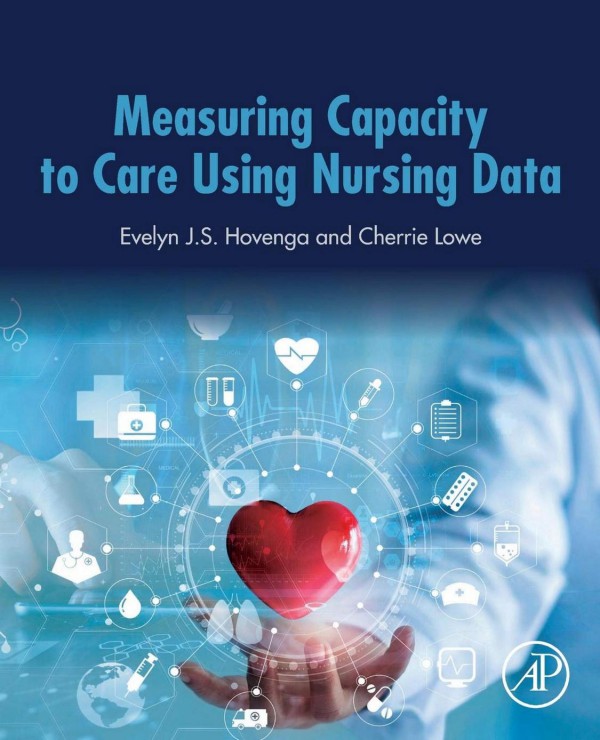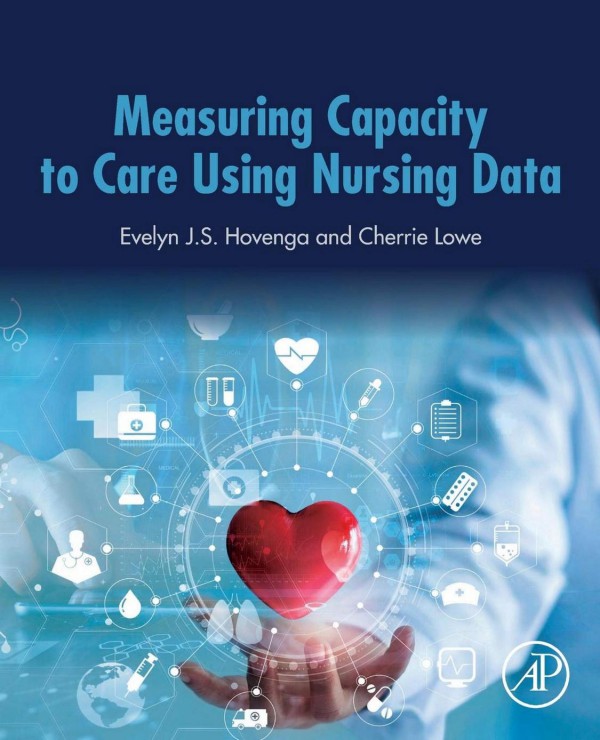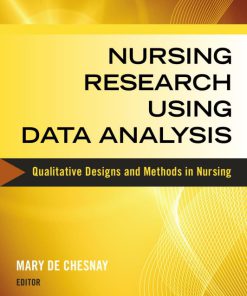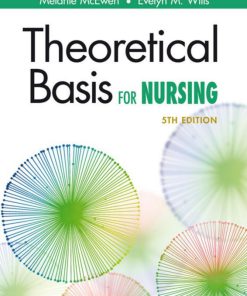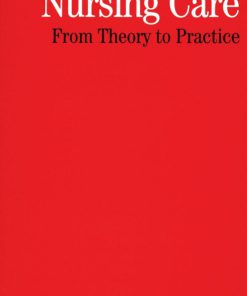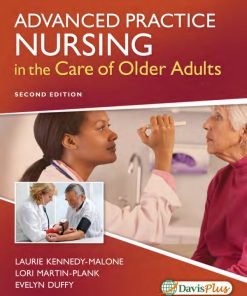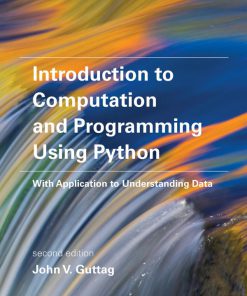Measuring Capacity to Care Using Nursing Data 1st Edition by Evelyn Hovenga, Cherrie Lowe ISBN 0128169788 9780128169780
$50.00 Original price was: $50.00.$25.00Current price is: $25.00.
Authors:Unknown , Author sort:Unknown , Published:Published:Jul 2020
Measuring Capacity to Care Using Nursing Data 1st Edition by Evelyn J.S. Hovenga, Cherrie Lowe – Ebook PDF Instant Download/Delivery. 0128169788, 9780128169780
Full download Measuring Capacity to Care Using Nursing Data 1st Edition after payment
Product details:
ISBN 10: 0128169788
ISBN 13: 9780128169780
Author: Evelyn J.S. Hovenga, Cherrie Lowe
Measuring Capacity to Care Using Nursing Data 1st Edition:
Measuring Capacity to Care Using Nursing Data presents evidence-based solutions regarding the adoption of safe staffing principles and the optimum use of operational data to enable health service delivery strategies that result in improved patient and organizational outcomes. Readers will learn how to make better use of informatics to collect, share, link and process data collected operationally for the purpose of providing real-time information to decision- makers. The book discusses topics such as dynamic health care environments, health care operational inefficiencies and costly events, how to measure nursing care demand, nursing models of care, data quality and governance, and big data.
The content of the book is a valuable source for graduate students in informatics, nurses, nursing managers and several members involved in health care who are interested in learning more about the beneficial use of informatics for improving their services.
- Presents and discusses evidences from real-world case studies from multiple countries
- Provides detailed insights of health system complexity in order to improve decision- making
- Demonstrates the link between nursing data and its use for efficient and effective healthcare service management
- Discusses several limitations currently experienced and their impact on health service delivery
Measuring Capacity to Care Using Nursing Data 1st Edition Table of contents:
Chapter 1: Dynamic Healthcare Environments
- Abstract
- How is capacity to care defined?
- Healthcare environments
- What influences the capacity to care?
- What are the desired health system outcomes?
- Nursing data at the center
Chapter 2: Health Care Operational Inefficiencies: Costly Events
- Abstract
- Workforce management
- Nursing workloads and nurse staffing methods
- Measuring operational activity and efficiency
- Learning health systems
- Operational research
Chapter 3: Digital Transformation Needs to Measure Nursing and Midwifery Care Demands and Workloads
- Abstract
- What determines nursing workloads?
- Nurse staffing methods in use or recommended
- Methods in use to measure nursing care demand
- How do nursing service demand measurement methods compare?
- Variables influencing nursing service demands, workloads, and costs
- Information flows and patient/client journeys
- Digital transformation enabling nursing data inclusion
- Use of metadata
- Nursing service demand metadata
- Indicators of nursing care demand
- Nursing workload management metadata need
- Optimizing workplace efficiencies
- Conclusion
Chapter 4: Nursing and Midwifery Work Measurement Methods and Use
- Abstract
- Describing nursing work
- Analyzing nursing work to be measured
- Work measurement methods
- Conversion of work measurement data to a workload measure
- Making use of study results
- Nursing work measures in use
- Patient classification principles
- Developing national nursing service weight measures
- Evidence of acuity link with patient outcomes
- Future directions
Chapter 5: Identifying Skill Mix Needs
- Abstract
- Matching available skills with service demands
- Addressing qualified nurse staffing shortages
- Current skill mix identification methods
- Nursing industry awards, agreements and skill mix
- Job evaluation and skill assessment methods
- Education and professional development contributions
- Nursing career pathways
- Re-engineering clinical services using non-nursing support staff
- Future directions for identifying and matching skill mix needs with available staffing resources
Chapter 6: Nursing and Organizational Models of Care
- Abstract
- Factors known to influence nursing models of care
- The nursing process — Conceptual base for nursing practice
- Small team nursing
- Inter and multidisciplinary models of care
- Organizational models of care influencing patient outcomes
- Success factors
Chapter 7: Staffing Resource Allocation, Budgets, and Management
- Abstract
- Using demand side organizational nursing and midwifery workforce planning methods
- Professional and government nurse staffing initiatives
- Rostering fundamentals
- Data variables required to calculate nurse staffing needs
- Projecting nursing service demand and workforce requirements
- Calculating departmental/unit nurse staffing requirements
- Staffing needs for other service types
- Significant variations resulting from method used
- An international patient type HPPD benchmarking research study
- Rostering methods
- Workforce availability
- Financial management
- Casemix definitions (hospital ‘products’)
- Connectivity requirements for nursing resource management
- Capturing and using the data operationally
Chapter 8: Workforce Planning
- Abstract
- Nursing and Midwifery Workforce Statistics
- Nursing and midwifery’s future perspectives
- Nursing workforce structures and statistics
- Nursing and midwifery workforce education and professional development
- Workforce planning models and tools
- Recruitment to the profession
- Workforce participation
- Replacement and succession planning
- Meeting future demands
Chapter 9: Digital Health Ecosystems: Use of Informatics, Connectivity, and System Interoperability
- Abstract
- A need to resolve data issues
- What is a digital health ecosystem?
- Essential ecosystem features
- Healthcare ecosystem connectivity frameworks
- Today’s state of the art
- Interoperability, clinical needs, and secondary data use
- Gap analysis and digital transformation
- Conclusion
Chapter 10: A Digital Transformation Strategy Enabling Nursing Data Use
- Abstract
- System implementation and change management
- Changing organizational digital health infrastructures
- Using ‘Lean’ and ‘Six Sigma techniques’ to design new work processes
- Potential use of nursing data
- Desired outcome measures benefitting nurses and their patients
- Data collection methods
- Local nursing acuity data use
- Ward/unit manager/senior nurse daily routines to ensure data accuracy
- Health IT evaluation methods
- A nursing workload management system and change management evaluation framework
Chapter 11: Measuring Health Service Quality
- Abstract
- What is quality?
- Nursing practice environments influencing quality
- Data quality
- Standards, accreditation and governance
- Reliability and quality measures associated with patient acuity data
- Clinical data management issues
- Outcomes research and big data
- Big data management and governance
Chapter 12: Residential and Community Care Management
- Abstract
- Introduction
- Residential care environments
- Measuring care service demand and funding mechanisms
- Residential service work measurement methods and outcomes
- Identifying skill mix needs
- Organizational and nursing models of care
- Staffing resource management
- Aged care workforce planning
- Use of informatics, digital transformation
- Documentation, reporting, and change management
- Measuring service quality
- Quality of life – future vision
Chapter 13: Current and Future Vision
- Abstract
- Global health and capacity to care
- Nurses and midwives’ unique contributions to global health
- Our digital health ecosystem
- Measuring health system effectiveness
- Hospital performance statistics and costs
- Safe patient care vs costs
- Benefits from using nursing data
- Optimizing our capacity to care in a sustainable health system
- A future vision
People also search for Measuring Capacity to Care Using Nursing Data 1st Edition:
a measure is taken by the nursing team
nursing measurements
measuring of capacity
benchmark data for nursing standards can be found at
bed measurement definition stna
You may also like…
eBook PDF
Nursing Research Using Data Analysis 1st Edition by Mary De Chesnay 9780826126894 0826126898
eBook PDF
Nursing Care From Theory to Practice 1st Edition by Christopher Bassett 1861564317 978-1861564313

